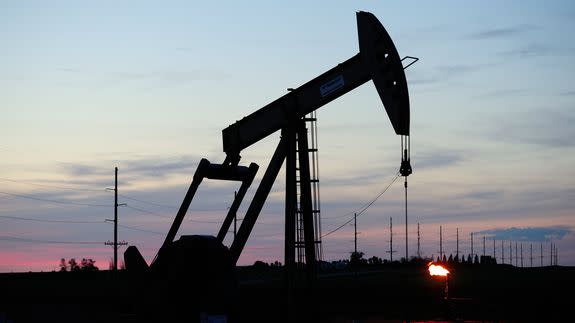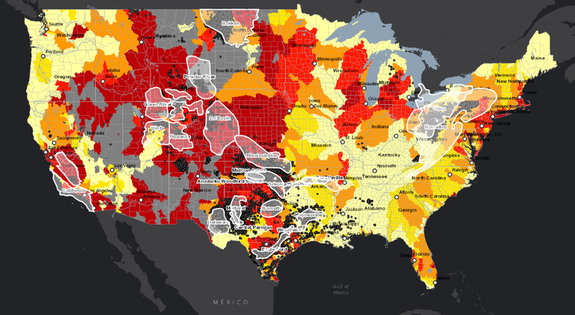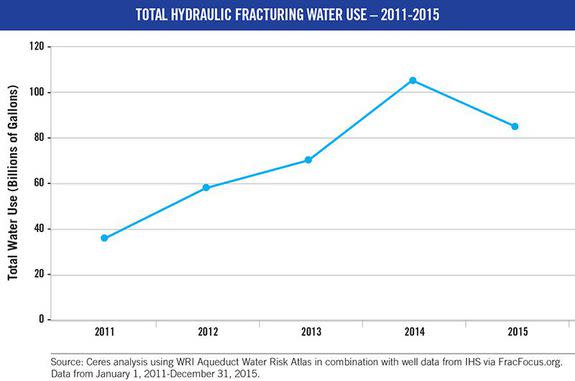Report: Fracking took 5.3 million gallons of water per well last year

Hydraulic fracturing is a water-intensive business: Bursting open just one shale gas well can require pumping millions of gallons of water underground.
Yet much of the United States' fracking activity takes place in areas that are suffering from high or extremely high water stress, according to Ceres, an advocacy group for sustainable investment.
About 57 percent of the nearly 110,000 wells that were hydraulically fractured in the last five years are in these highly stressed regions, including basins in Texas, Colorado, Oklahoma and California, Ceres found in an interactive map and report published Thursday.
SEE ALSO: Oil and gas wastewater is changing the Earth's surface, study finds
Companies used 358 billion gallons of water from Jan. 1, 2011, to Jan. 31, 2016, to frack shale oil and gas wells — an amount equal to the annual water needs of 200 mid-sized cities, the report said.
As prolonged droughts and population growth continue to strain U.S. water supplies, oil and gas companies could soon find themselves competing with local communities, farmers and other water-guzzling industries.

Image: ceres
"This remains a very high-risk area for investors [in energy companies]," Monika Freyman, the report's author and director of Ceres' water program, told Mashable.
Oil and gas companies aren't just operating in water-stressed areas. They're also using substantially more water in fracking operations.
The average water use in each fracked well more than doubled in recent years, from 2.6 million gallons per well in 2011 to 5.3 million gallons per well in 2015, according to Thursday's report.
The research is based on national shale well data from FracFocus.org, via the consulting firm IHS, and water-stress data provided by the World Resources Institute's Aqueduct Water Risk Atlas.
Freyman said it was not entirely clear why the water-per-well rate was rising, but she said it could be because companies are drilling longer horizontal wells to tap oil and gas deposits in shale formations, and thus need more water to travel longer distances.

Image: ceres
Total water use for fracking operations has similarly grown. The industry used 105 billion gallons to frack wells in 2014, up from less than 40 billion gallons in 2011, the report found.
However, water use did decline last year, to about 85 billion gallons overall, as plunging energy prices forced drillers to scuttle plans for new wells.
Not all of the water used in fracking is freshwater. Some of it could be recycled or treated wastewater that would've otherwise been stored underground, although Freyman said researchers did not know the exact breakdown.
Avner Vengosh, a professor of geochemistry and water quality at Duke University, has separately studied the water footprint of fracking activities.
In a September 2015 study, he found that energy companies used nearly 250 billion gallons of water to extract "unconventional" shale gas and oil via fracking between 2005 and 2014.
Over the same period, fracked wells produced about 210 billion gallons of wastewater.
Vengosh concluded that, even though the water numbers seemed sky-high, fracking operations represent just 1 percent of total U.S. industrial water use.
Still, fracking can "still pose serious risks to local water supplies, especially in drought-prone regions such as the Barnett formation in Texas, where exploration and development is rapidly intensifying," he said in 2015, adding that "local water shortages could limit future production."
